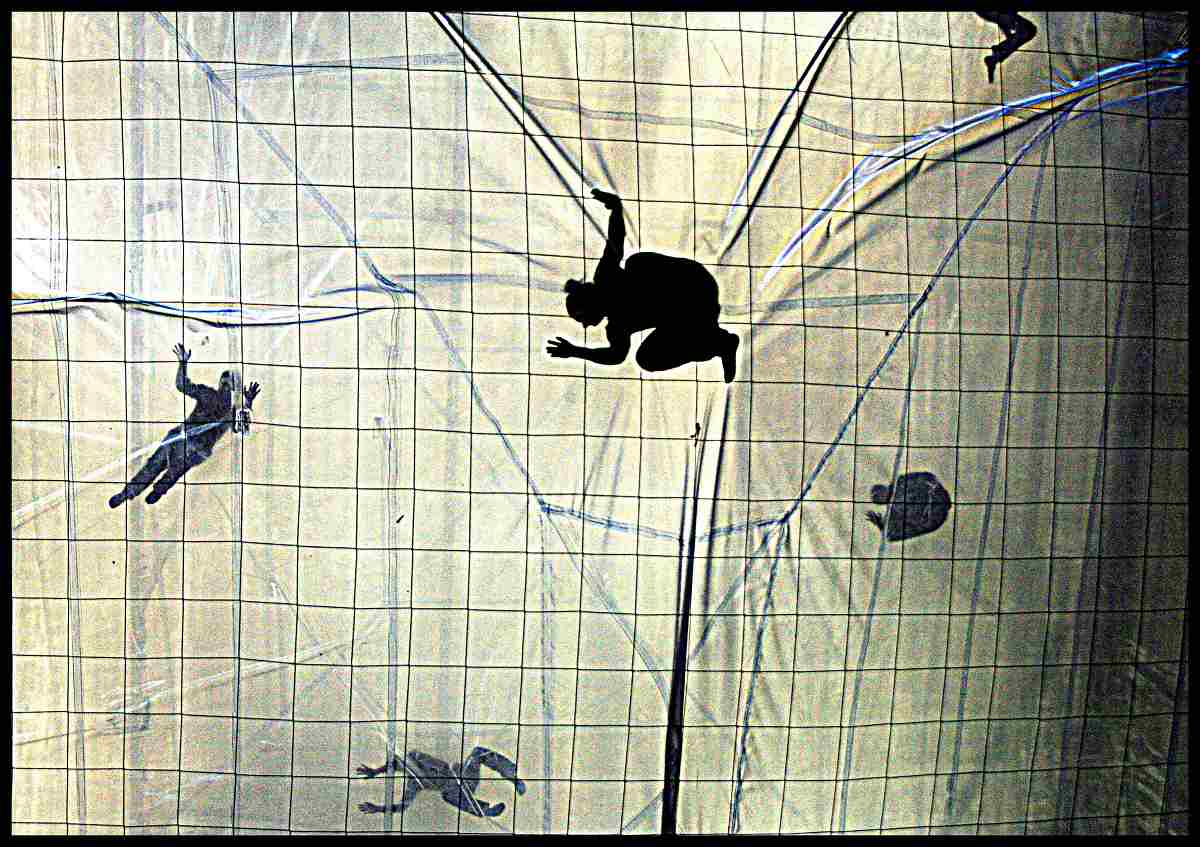“We all have different narratives; all of our narratives are at different stages of development.”
“If they were right, I’d agree, but it’s them they know not me. Now there’s a way and I know that I have to go away.”
I’ve been thinking lately about how the narratives we create for our lives, or those that are imposed upon us, can limit or expand our possibilities. The question is, “how do we stay open to new ways of thinking, feeling, doing, and being?” As you might suspect, several books and articles shed a bright light on that question.
In The Covenant of Water, Abraham Verghese, the best-selling author of Cutting for Stone, follows the paths of three generations of a close-knit, trauma-torn family in India. Verghese, himself, serves as a great model for creating new narratives in your life. He is a medical doctor who, at midlife, decided to train at the Iowa Writers’ Workshop. After achieving distinction as a physician and an author, he became a professor of the theory and practice of medicine at Stanford Medical School. When he isn’t in the process of writing a 775 page epic novel, he continues his clinical practice and speaks widely about the human element in medicine. He is definitely a crowd.
His latest book begins in 1900 with a 12 year-old from Kerala, India, being sent off on her own for an unwanted, arranged marriage with an older man. It ends in 1977 when the young girl’s granddaughter experiences another shock to shake up her narrative of life. All of the characters in the 77 year time span of the book make their way in the world in spite of terrible tragedies and seemingly impossible challenges. As Verghese documents a series of horrific events describing how bad things happen to good people, his characters never lose hope. Each new episode provides an opportunity for reinvention.
In a similar vein, Andre Dubus painfully describes how to hang onto hope after a long string of disasters. In his most recent novel, Such Kindness, Dubus follows the life of Tom Lowe, a destitute ex-carpenter who owned his own business as well as the beautiful house he designed and built before falling off a roof and becoming suddenly disabled. He ends up losing his wife and son, and lives in decrepit public housing in Amesbury, Massachusetts. Tom, the narrator of this novel, can’t work and can’t seem to catch a break. Unfortunately, work was Tom’s identity. It’s what gave him a sense of utility and purpose. It was his way of showing devotion to his wife and son – until it wasn’t. He ends up getting addicted to pain killers, falling behind on mortgage payments, and seeing his life, as he envisioned it, slipping away. At his low point, his disability checks pay for rot-gut vodka to dull his burning pain while he stews alone in bitterness. To add insult to injury he loses his car, his driving license, and his precious tools which were stolen through a scam. After kicking opioids, he becomes addicted to his anger. Everyone is to blame except him – Big Pharma, Big Insurance, banks, his wife’s new husband, and doctors. His only hope is to win back the affection of his estranged son. Out of this shambles, Tom begins to resurrect his life through acts of kindness. It is a remarkable redemption story in which Tom is able to construct new narratives for his life: from successful carpenter to disabled-derelict-drunk to kind soul – each transformation triggered by an unexpected episode. It’s a story born in trauma elevated by acceptance and culminated in transcendence. Tom’s life looks like a crowd of different people.
The story of the self is not always a grand tale conforming to a narrative arc.
After reading those two books, I came across an article in the New York Times on June 12, 2023 by Simon Critchley, a professor of philosophy at the New School for Social Research, in which he addresses how our sense of self develops. One method is to create a personal narrative which defines our “identity;” the other option is an episodic concept of the self which is more transient and discontinuous – like the stories in The Covenant of Water and Such Kindness. The narrative approach, while seductive, runs the risk of resulting in a limiting, self-serving, self- absorbed life. The episodic approach, while challenging, offers the possibility of living more fully in the present. In this brilliant essay, Critchley suggests that “the self is more truthfully described as a series of episodic blips than some grand, unified self-aggrandizing tale.”
Can you imagine how thrilling it was to me to come across this gem. I couldn’t agree more with Critchley that life doesn’t need to be a continuous, narrative arc. It seems to me that opening to the possibility of surprise about who we are makes life more of an unpredictable adventure instead of a prescribed path. Each moment becomes an opportunity for something new and fresh – free from our own narratives and from the narratives others have for us, people we may admire or detest. People who want us to flower AND people who just want us to fit in. An episodic life allows for the possibility of transformation and transcendence in spite of the trauma we may encounter along the way.
And then Ram Dass jumped back into my life with the same theme. My older daughter and I attended a session with Ram Dass at an Omega event in New York many years ago. I remember distinctly that all participants were asked to sing a mantra together. Sitting next to my daughter and listening to her beautiful voice as we sang a spiritual mantra still resonates with me. It was a powerful episode.
So I was delighted to come across one of the last books Ram Dass wrote, Polishing the Mirror. (His last book was Walking Each Other Home published in 2018). In Polishing the Mirror, Ram Dass shares heart wrenching experiences of opening. For over 50 years, he explored the depths of consciousness and love through psychedelics, Indian gurus, and spiritual teachings. In this book, he implores us to open our hearts and quiet our minds. To live in our souls instead of our egos. To embrace the natural flow of life. To experience how selfless service can be transformational. To accept fear and suffering as a path to grace and freedom. To practice mantras and meditations. To be willing to be sprayed by the stream of life while standing on the bridge without getting sucked into the current. For me, the book cut to the core of all the stories I shared in this post. Life is about discovering who we are, why we are here, and how we can become beacons of unconditional love and compassion.
Whew! That’s a lot. Let’s boil it all down.
As Viola Davis stated simply, “We all have different narratives; all of our narratives are at different stages of development.” My life is no exception. My narrative growing up in a small, Midwestern town was to go to business school and work in a corporation until I retired. You know – golf club memberships, executive privileges, nice cars etc. My “episode” as a soldier in Vietnam changed that narrative. My narrative morphed into a social activist protesting war and human rights abuses. After having kids and needing to make a living, I became a management consultant working for large organizations. After grandkids, my narrative revolved around reading, writing, helping and serving. As I grew, my narrative changed. I am a crowd.
As I have mentioned in previous posts, I now spend an hour each morning meditating and playing my guitar to recover from reading the New York Times. Since my late start playing the guitar three years ago, I’ve been adding songs to my repertoire. When I heard the closing song in the closing episode of Ted Lasso (speaking of episodes), I immediately found the chords and lyrics and started practicing. The song, if you are not a Ted Lasso fan or if you don’t recall the ending song, was Father and Son written and performed by Cat Stevens in 1970 when he was 22 years old. Speaking of an episodic life, Cat Stevens converted to Islam and changed his name to Yusaf Islam shortly thereafter. In any event, my favorite line in the song is “If they were right I’d agree, but its them they know not me, now there’s a way and I know that I have to go away.”
What that verse says to me is that other people’s narratives of who I am and/or who I will become can’t possibly describe what my life should look like at a particular stage of development or episodic experience – particularly when no one can predict what might happen to alter a narrative arc.
The truth is that we are different people at different points in our life depending upon the chosen or imposed events that we experience over the course of our lives. We are also different people in different moments depending on what dimension of our lives happens to be dominating at a particular time – physical, emotional, intellectual, or spiritual. We learn from experience. We suffer and enjoy different events and episodes in our lives. We are a crowd. And isn’t that a wonderful thing. I hope we can honor both the expected and unexpected events and the amazing experiences that life brings to us. I hope that, no matter what those experiences are, we can quiet our minds, open our hearts and live in our souls. May it be so.
Also published on Medium.



